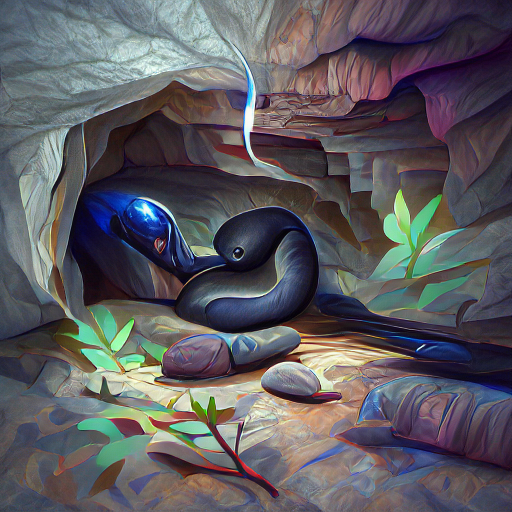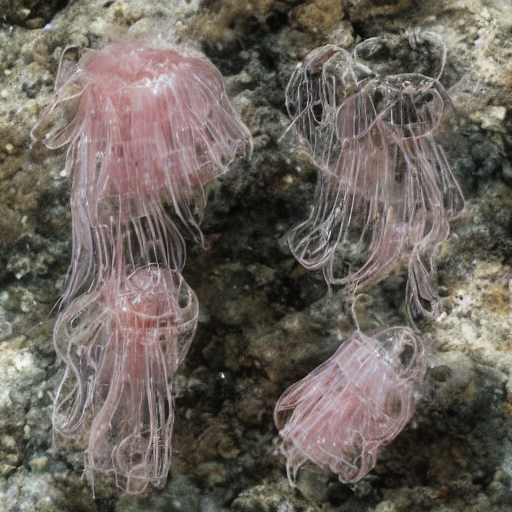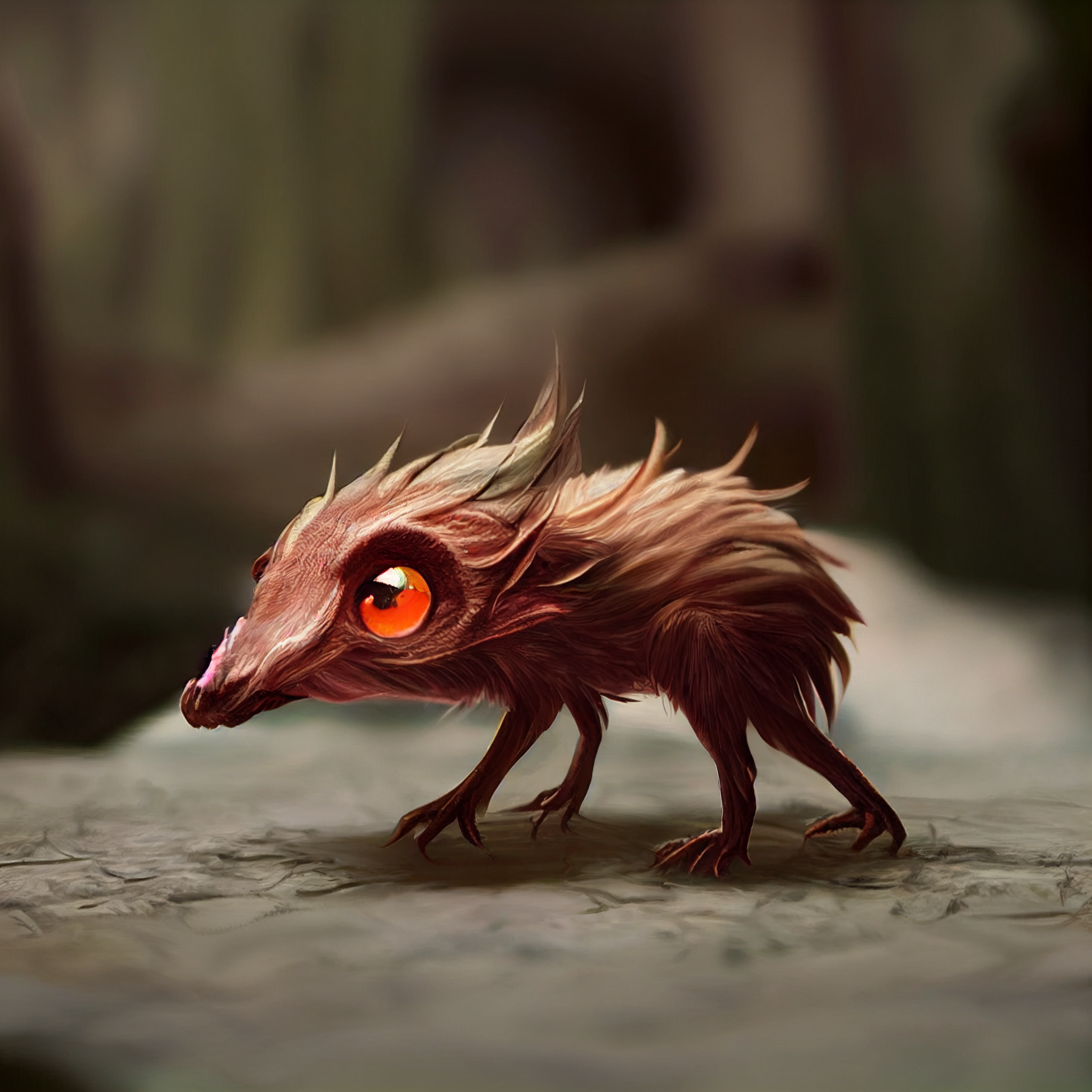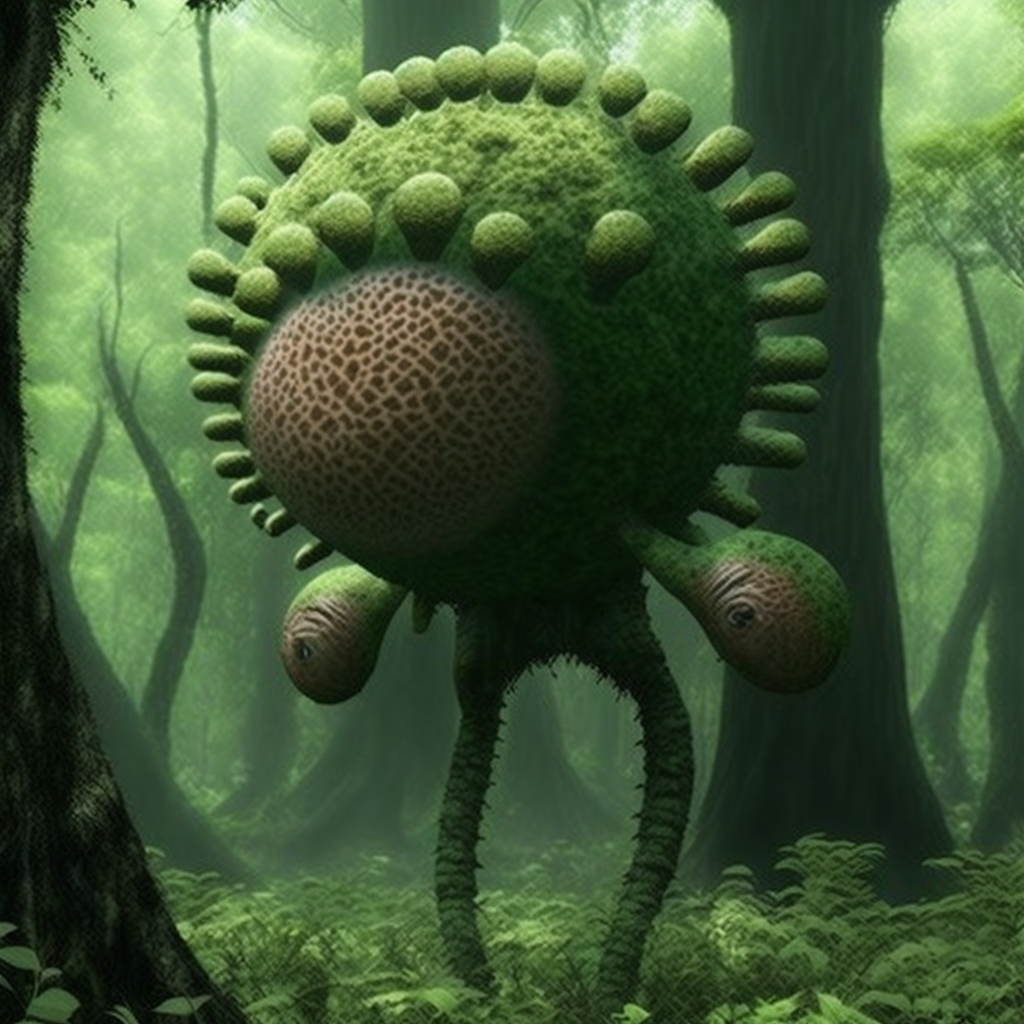Discover more creatures

#106 Sidjif
The sidjif is a large, snakelike creature that is commonly used as a mount for the orcs and goblins of the world. Their massive bodies can grow up to 60 feet in length, and are powerful and muscular enough to support the weight of ten riders. They have four hearts, a large mouth, and several eyes that can be found on their head, neck, and body. They are very trusting and have been known to forge strong bonds with the riders that they are paired with. Their name comes from the sound that they make when they are pleased or hungry, which follows a short, warbling beat.

#216 Zelorgbia
Zelorgbian creatures are relatively simple jellyfish-related invertibrates that live on the edges of the ocean. Zelorgbians come on shore to bask in the sunlight and to lay their eggs. However, they can't move on land and risk dehydration if they're beached, so they choose to stay as close to the water's edge as possible. They are very sociable and will often move in huge herds, which sometimes get swept long distances by strong ocean currents.

#104 Ayri
Ayris are large, green worms that live near shallow waters. They can grow to be up to ten feet long and weigh up to four hundred pounds. They have a mouth with a large tongue in the middle of their head, which they use to feed on small fish, crabs and other marine animals. Ayri mobility is extremely limited: they lack any bones and instead rely on a complex network of contracting muscles around their bulbous mass of body fat.

#017 Dust Angel
The dust angel is a common critter in arable desert areas. Nutrients from their saliva propagates through plants into the soil, improving yield for all plants in the vicinity. They're extremely rare and expensive, but the richest farming organizations seem to have a limitless supply to use.

#166 Zaigarch
Zaigarchs are translucent jellyfish-like creatures that live in the magma chambers of their planet. They have bioluminescent organs that allow them to be seen in the dark recesses of their native caves, and the light they emit provides ocular nutrients to the other aquatic creatures nearby. They have no natural defenses and are very easy prey for larger animals. Zaigarchs reproduce asexually while being digested in other aquatic animals' stomaches.

#308 Nishiki
The nishiki is a large, intelligent and naturally magical creature that stands far above most other plainswalkers. They are usually found in large herds in the northern and southern tundras of the planet, where their thick hide keeps them impervious to freezing temperatures. Although nishikis have immense magical powers, they are not able to cast spells like their smaller cousin, the nashaka. Instead, their magical powers manifest physically in the form of a gigantic horn that grows out of their forehead. Depending on the individual nishiki and their mood, touching the horn can heal wounds and cure disease, or create fire and lightning.

#307 Kubup
Kubups are brightly-colored arboreal creatures that can jump up to 100 feet high. They are an important part of forest ecosystems, as they feed on dead tree leaves and recycle them into nutrients for the trees. They typically climb to the very top of trees and sleep there, clinging to the leaves by their sharp teeth, but during stormy weather, they can sometimes be found hiding under rocks or in caves. Their fur, when rubbed on a person's skin, will cause that person to turn into a dornax if the kubup was faizen. The effects of this process are irreversible except by highly skilled magicians.

#326 Kawa-tri
Kawa-tri are bulbous, tree-like creatures that live in forests. They thrive in the shade of other trees and grow much faster when they are standing near other kawa-tri. When a kawa-tri senses that it is in danger, its entire body will harden, effectively turning it into a tree. This makes it difficult for predators to eat it, as the tough bark is not easily digested. However, kawa-tri will sometimes harden to protect themselves from the rain and will die if left too long in this state.

#132 Aeldatyr
Aeldatyr scales are golden and shiny, and imbued with powerful magic that allows them to create lightning. They grow to be very large, roughly the size of an elephant, and their scales are capable of reflecting sunlight, which makes them appear almost as if they are on fire when exposed to direct sunlight. Aeldatyrs are a feared predator, feeding primarily on large prey such as sheep, cows, horses, and humans. It is capable of eating almost anything it can get its teeth into. Aeldatyrs live in the shallow underground, in caves and tunnels that they have made with their claws. They are not very social creatures, preferring solitude over companionship. They emerge for adventure and sport as often as they do for food. The Aeldatyr is a highly intelligent creature that can speak many languages and understand human speech. It is a very curious creature and will often spend long periods of time observing humans.
Popular Stories
-
A Dance as Old as Stone by Anonymous user #144
Beneath the craggy, frost-kissed peaks, where mountain airs do blow, The d'geft dwell, a solitude, in realms of stone and snow. Not as we, their lives they lead, in hollow halls of stone, Passing...
- 274 words
- ♥ 4 kudos
-
O Boolics by Muse
The boolics crawl in circles through the grass, Their lives so simple, so free from class. But in the night, they dream of more, A perfect life within their shell; a world to explore. But when t...
- 121 words
- ♥ 3 kudos
-
Ode to Dirbs by Muse
The dirb wanders fields of green With legs so thin, they're not easily seen They search for seeds and scraps to eat A diet that is mostly sweet Though fragile, their legs will mend From every bu...
- 85 words
- ♥ 1 kudo
-
Shadow of an Unknown Past Preview by Jessica
CHAPTER ONE OMENS Mariea Mariea didn’t know where she was—everything was unfamiliar, and she couldn’t remember how she had ended up there. All she knew was that it was too dark to see, and th...
- 3,983 words
- ♥ 2 kudos
-
/that/ time of year by MJ
"Is everything in the car?" My dad calls from the front door. His glasses are low on his nose, making the bags under his eyes look even larger. He's wearing a burnt orange vest over a black t-shirt...
- 582 words
- ♥ 7 kudos
-
The Rogue's Steel-Chapter I by T
"Get back here Mavros!" Helios dodged a merchant and his cart. He huffed, as he glanced toward which direction he could go. He bolted towards an alleyway, skidding on the dirty cobblestone. "Maybe ...
- 3,044 words
- ♥ 6 kudos

.png)





